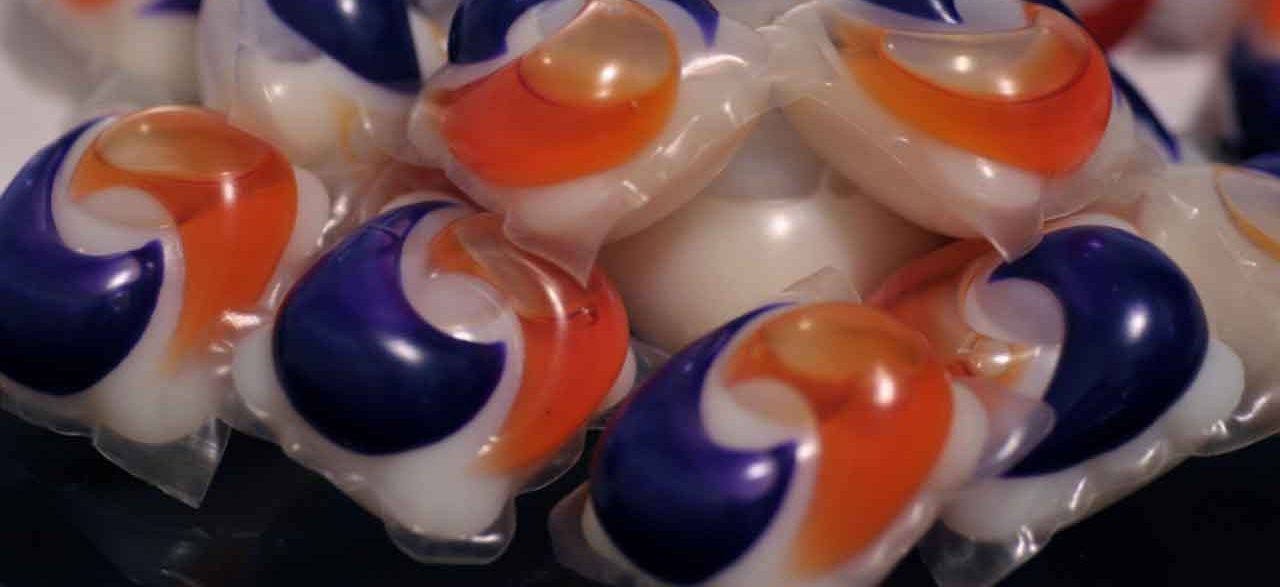Laundry Detergent Packets Put Children in Danger

Exposure to laundry detergent packets sends thousands of kids to the ER each year, some with life-threatening complications.
In 2012, small, self-contained packets of laundry powder were introduced to U.S. shoppers and soon became big sellers. They seem like a perfect, mess-free alternative to boxes of laundry powder and heavy containers of laundry liquid. To use, you simply take a small, self-contained packet and throw it in your washing machine along with a load of dirty clothes.
But it turns out laundry detergent packets have a dark side – they come with a significant danger for young children. Thousands of youngsters exposed to the packets end up in emergency rooms every year, some of them suffering from potentially deadly reactions.
That’s the sobering conclusion of a study from the Center for Injury Research and Policy at Nationwide Children's Hospital and the Central Ohio Poison Center. The researchers found that over 2013 and 2014 there were over 62,000 calls to U.S. poison control centers involving exposure of children younger than 6 to laundry detergent packets. About half of these kids ended up in the ER with symptoms, including vomiting, eye injuries, throat burns, and heart and breathing problems. Some went into comas, and several suffered cardiac arrest. Two of the youngsters died.
YOU MIGHT ALSO LIKE: Pediatricians Urge Improved Safety for Kids
Incidents related to laundry detergent packets have soared in recent years, increasing about 17 percent during the two-year period studied. Poison control centers reported about 30 calls a day (one call every 45 minutes, on average) from parents and caretakers concerned a child was sick or injured from exposure to detergent packets.
Calls to poison centers about children’s exposure to traditional laundry and dishwashing detergents as well as laundry detergent packets were included in the study. However, detergent packets clearly posed the most danger and accounted for 60 percent of all detergent-related calls.
The risk of a child experiencing a serious medical outcome, including hospitalization and intubation, was significantly higher for those exposed to the chemicals in a laundry detergent packet compared to exposure to any other type of laundry or dishwasher detergent. In fact, the researchers found at least one child in the U.S. every day was hospitalized due to an illness resulting from laundry packet exposure.
Differences in chemical composition and concentration between laundry detergent packets and other types of detergents probably explain why the packets are so dangerous to young children’s health, according to the study.
"Many families don't realize how toxic these highly concentrated laundry detergent packets are," said researcher Marcel J. Casavant, MD, chief of toxicology at Nationwide Children's Hospital.
Casavant and his colleagues noted the packets attract little ones because the packets often have colorful designs and sweet fragrances. Some of the packets contain concentrated granules of detergents while others hold liquid. All can be toxic, but the liquid ones, if swallowed, doubled the chances a child would end up admitted to the hospital, the study showed.
Last year, in an effort to reduce children’s unintentional exposure to the contents of laundry detergent packets, the American Society for Testing and Materials published a voluntary Standard Safety Specification for Liquid Laundry Packets. But Gary Smith, MD, DrPH, director of the Center for Injury Research and Policy at Nationwide Children's Hospital, feels it didn’t go far enough to protect kids.
"This voluntary standard is a good first step, but it needs to be strengthened," said Smith, the senior author of the laundry packet study. "Unless this unacceptably high number of exposures declines dramatically, manufacturers need to continue to find ways to make this product and its packaging safer for children."
For now, it makes sense for families with children younger than 6 years old to use traditional detergent instead of the packets. “It isn't worth the risk when there is a safer and effective alternative available,” Casavant said.
More tips from Nationwide Children's Hospital Parents to help keep young ones safe:
• Keep laundry packets and all other types of detergent up and out of sight from kids. If you insist on using laundry packets, keep the detergent packets in a locked cabinet.
• Close packages or containers of laundry detergent packets and put them away as soon as you use them.
• Keep the national Poison Help Line number in your cell phone and post it near your home phones: 1-800-222-1222.
Updated:
February 27, 2020
Reviewed By:
Janet O’Dell, RN